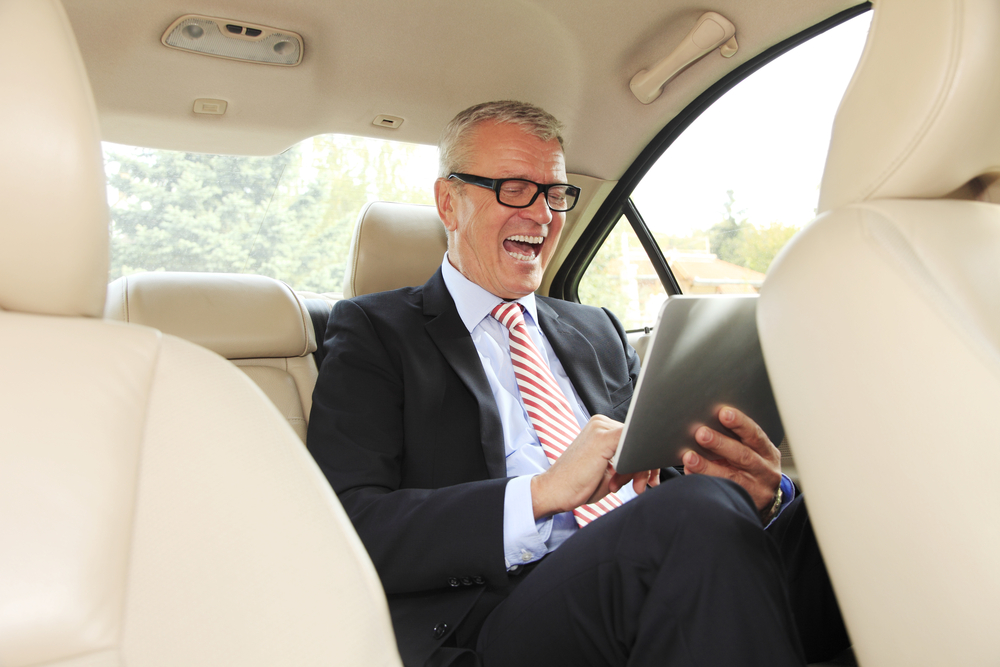Share This
Related Posts
Tags
Calling All Cars
By Cutright Elizabeth on Aug 29, 2016 in Technology
For seniors struggling to get to and from medical appointments, coordinating transportation just  got a little bit easier, thanks to ridesharing companies like Lyft and Uber.
got a little bit easier, thanks to ridesharing companies like Lyft and Uber.
For many, the first real taste of freedom comes with the acquisition of a driver’s license. Suddenly a whole new world opens up, one covered in blacktop and filled with endless possibility. But licenses don’t last forever, and eventually we are all forced to surrender the driver’s seat.
While public transportation, bicycles, and even taxi services can help the “carless” get around, for many older adults giving up the car keys means giving up independence. But that’s all about to change!
With the advent of Uber and Lyft, relatively budget-friendly, on-demand car service can be beckoned with the touch of a button. Because only 25% of American seniors own smartphones, in the past they’ve been left out of the rideshare loop. Recent efforts by Lyft and Uber aim to close that gap. In the last few years, both companies have embarked on programs designed to open up their services to older adults.
No More Waiting Around
According to Senior Housing News, 3.6 million U.S. citizens skip medical care and miss doctor’s appointments because they lack access to adequate transportation. For seniors, the inability to receive regular checkups and non-emergency medical care leaves them vulnerable to life-threatening complications.
Many traditional transportation services available to seniors require advanced bookings, which can make impromptu appointments impossible. Pre-booked transportation services also operate within limited schedules, leaving seniors with no other option but to arrive hours early or wait around for a ride long after the examination is over.
“The inefficiencies in this industry are enormous, and patients have no voice or alternative,” Anya Babbitt, Founder & CEO of SPLT stated in a recent press release. “Patient Trust is what we plan to bring back to the NEMT experience.”
No House Call, No Problem
The almost instantaneous nature of on-demand car service available through Uber and Lyft provides senior citizens with greater flexibility and more options in terms of appointment times and coordinating medical appointments with other necessary errands. Best of all, on-call car services make it easier to plan for regular doctor visits.
“Getting a patient to their doctor appointment can lower the cost and increase the quality of care,” added Lyft’s head of enterprise partnership, Gyre Renwick in the same press release. “It’s our mission to connect people and communities through effective, affordable, safe and accessible transportation.”
As part of a partnership with SPLT, “an enterprise-first carpooling app,” Lyft will soon be providing Non-Emergency Medical Transportation (NEMT) to senior citizens in and around Detroit.
Eliminating the need for a smartphone, the Lyft/SPLT service allows users to summon with a text, phone call or online request.
As Babbitt explained in a recent interview with Crain’s Detroit Business, their partnership with Lyft won’t require smartphones. Instead, Splt has developed a system allowing users to request services online, by text message or with a simple phone call.
“More seniors are using smartphones, but they won’t need to have one,” she adds.
Riding Shotgun
Meanwhile, on the other side of the country, San Francisco-based Uber has been working with senior centers and community groups to help older area residents access its ridesharing services. Debuting in October of 2015 and dubbed uberASSIST, Uber’s program endeavored to help older adults call and pays for rides via smartphone.
Recognizing more could be done, Uber launched a community-based senior outreach program in July of last year. The program hosts technology tutorials and offers free rides at participating retirement communities and senior centers, with the aim to illustrate how technology can enhance the day-to-day lives of retirees.
“Twenty-six million American depend on someone else as a way to get around,” Meghan Joyce, regional general manager for Uber East Coast, told Senior Housing news. With Uber, she says, “older riders are now able to gain their independence.”
Uber’s efforts aren’t confined to California. Collaborating with cities and local senior-focused organizations through the country, the company is currently running similar pilot programs in Florida, Arizona and California.
“This is a great opportunity for us to learn about the needs of our users,” Joyce told Senior Housing News.
“Uber is an incredible way for people who need a little more help with transportation to get a ride safely and reliably. It’s an amazing way to maintain your independence even if you no longer want to drive.”
